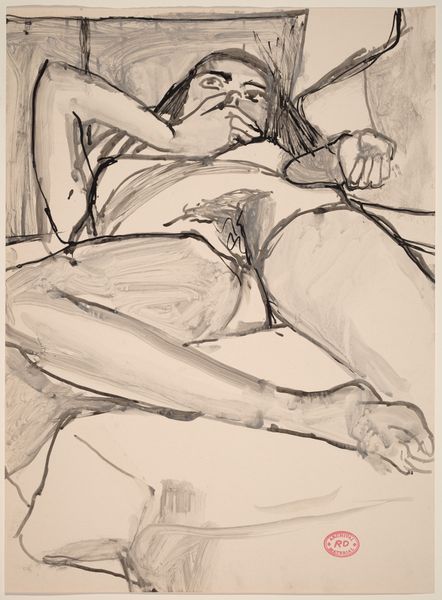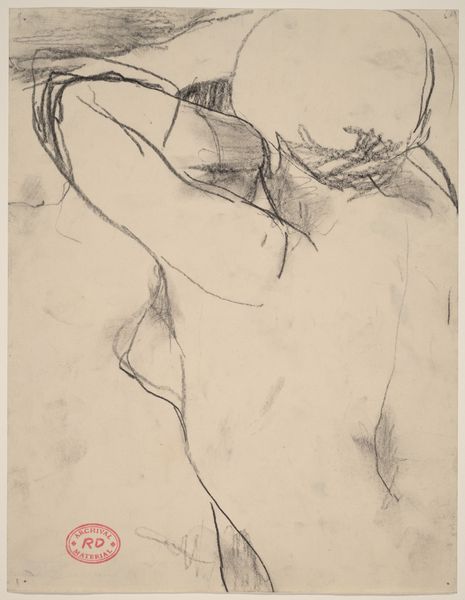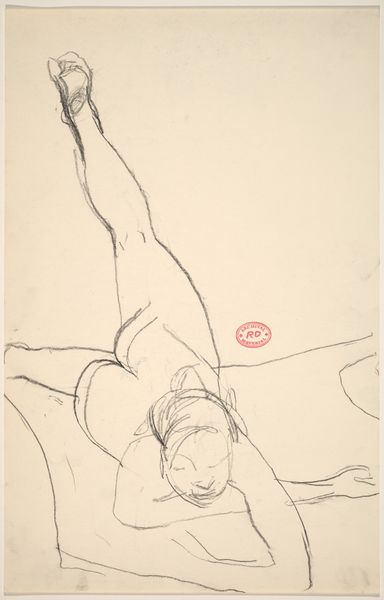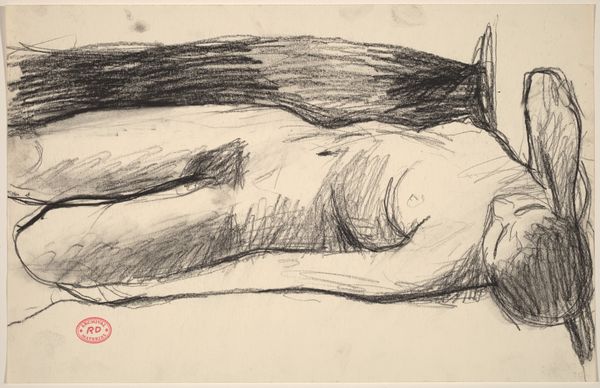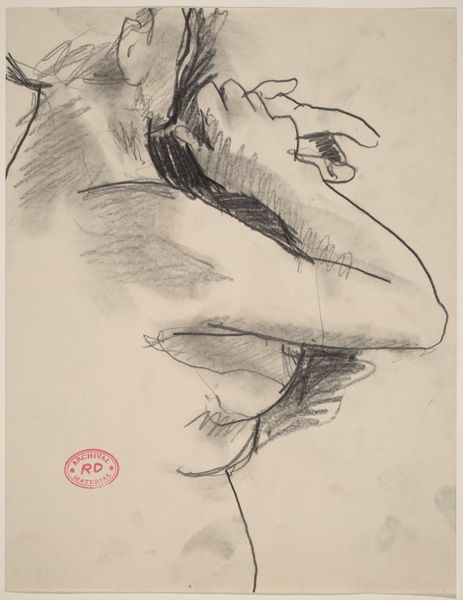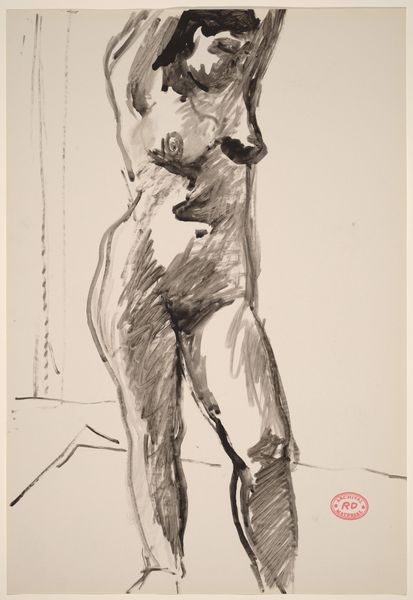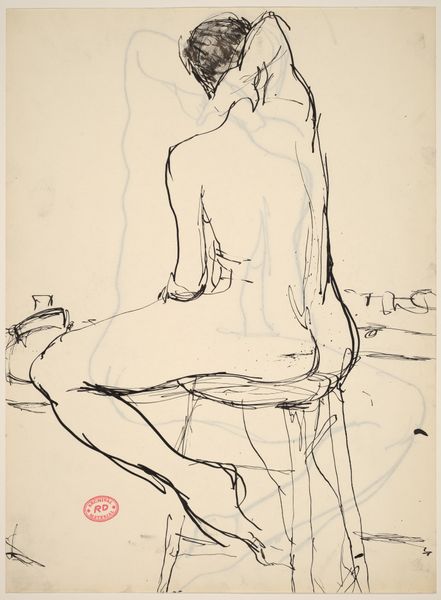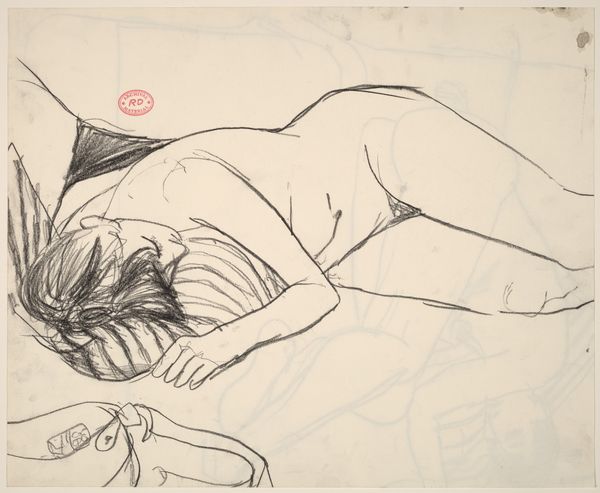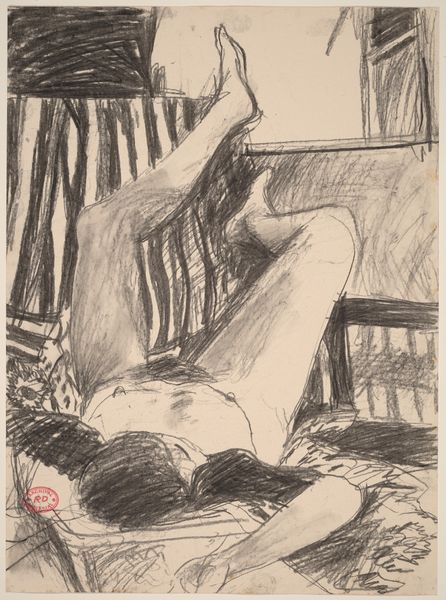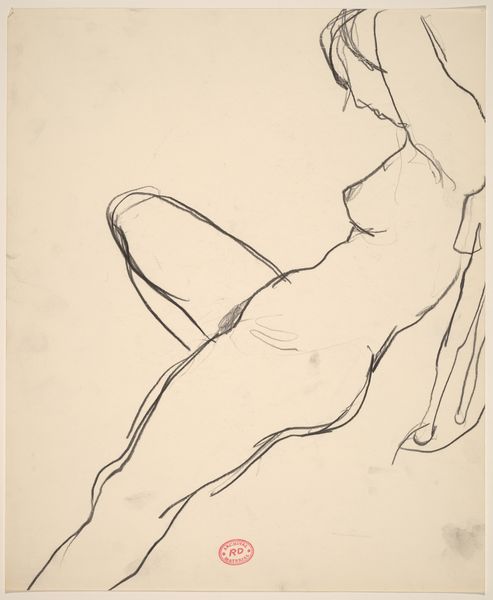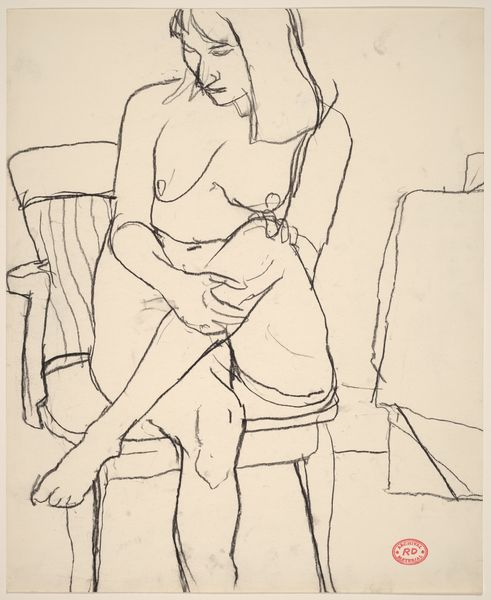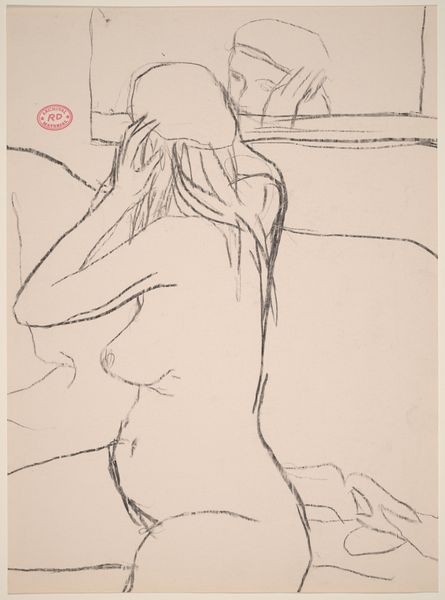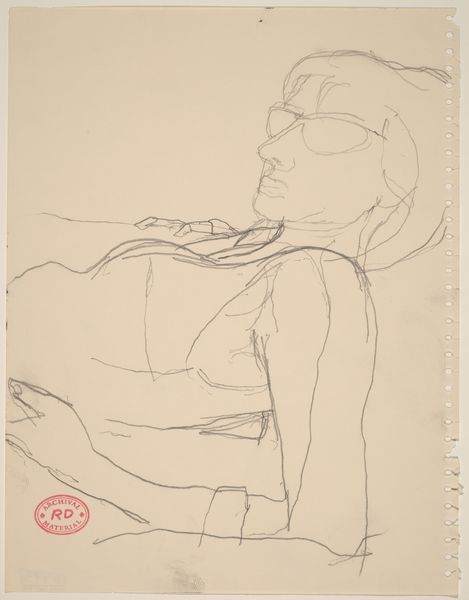![Untitled [female nude reclining on striped pillows] by Richard Diebenkorn](/_next/image?url=https%3A%2F%2Fd2w8kbdekdi1gv.cloudfront.net%2FeyJidWNrZXQiOiAiYXJ0ZXJhLWltYWdlcy1idWNrZXQiLCAia2V5IjogImFydHdvcmtzLzQ4M2Y3YzVhLTFlM2EtNDQzZS1iZDZhLTZjZDA1OTc5MTczYi80ODNmN2M1YS0xZTNhLTQ0M2UtYmQ2YS02Y2QwNTk3OTE3M2JfZnVsbC5qcGciLCAiZWRpdHMiOiB7InJlc2l6ZSI6IHsid2lkdGgiOiAxOTIwLCAiaGVpZ2h0IjogMTkyMCwgImZpdCI6ICJpbnNpZGUifX19&w=3840&q=75)
Untitled [female nude reclining on striped pillows] 1955 - 1967
0:00
0:00
drawing, ink
#
drawing
#
ink drawing
#
figuration
#
bay-area-figurative-movement
#
ink
#
intimism
#
nude
#
modernism
Dimensions: overall: 43.2 x 31.8 cm (17 x 12 1/2 in.)
Copyright: National Gallery of Art: CC0 1.0
Curator: Here we have an ink drawing by Richard Diebenkorn, likely created sometime between 1955 and 1967. It's called "Untitled [female nude reclining on striped pillows]". What's your first impression? Editor: It feels… languid. Relaxed, even. The black ink creates strong outlines, but the washes of grey soften the form and lend a sense of ease. The subject seems at peace, undisturbed by the viewer. Curator: I notice how the striped pillows act almost as a visual echo of her pose, amplifying this feeling of rest and inviting repose. Note also the modern feel—intimism with the artist's touch present in every stroke, inviting empathy rather than idealized distance. Editor: That intimacy feels carefully constructed, doesn't it? In that period, representing the female nude could so easily fall into objectification. Here, she’s reclining, yes, but her gaze is averted, almost challenging the traditional power dynamic between artist/viewer and model. It makes me wonder, how complicit or resistant was Diebenkorn to these established tropes? Curator: Good question. It could well point towards the subtle rebellion of modernism itself, refusing classical idealism in favor of a rawer, more emotionally resonant truth. The bold use of ink contributes to this – the lack of colour feels almost like a stripping away of artifice. There are ancient echoes here, of course: odalisques, reclining goddesses… figures from across art history who held both power and vulnerability. Editor: Precisely. The symbolism of reclining nudes in art is complex and often troubling. But I agree, something here feels different. The visible brushstrokes and simplified forms invite us to consider the artist's process and relationship to the subject. Was he aiming to represent raw experience, or challenge preconceived notions about the female body? It’s a complex tension. Curator: It's interesting how a piece created during a time of such cultural upheaval in America invites such sustained meditation. I see a cultural record – a search for comfort within complexity. Editor: Absolutely. The figure and pose are timeless, yet grounded in a specific era. For me, the real value lies in its provocation of thought— its invitation for ongoing questioning and the challenging of how women are perceived through art history and representation itself.
Comments
No comments
Be the first to comment and join the conversation on the ultimate creative platform.
